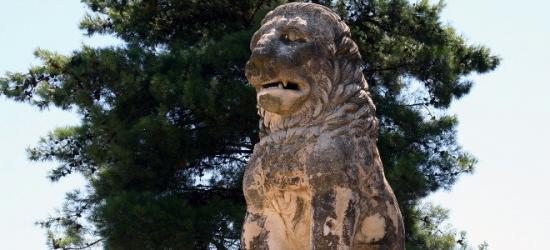Source - http://greece.greekreporter.com/2014/10/02/harvard-study-amphipolis-tomb-belongs-to-laomedon/
The vast hype surrounding the newly-excavated Amphipolis tomb has academics scrambling to their Greek histories in search of all possible candidates who could be resting within the tomb’s sealed third chamber.
But perhaps that mystery was solved over 70 years ago. A 1941 research paper sponsored by Harvard University – “The Lion Monument of Amphipolis” – casts an intriguing new theory about the occupant of the Casta Hill tomb.
The paper focuses on the lion of Amphipolis, an iconic sculpture discovered near the ancient city. It describes in great detail the lion’s significance and historical background.

According to the study, Amphipolis was likely the spot where Laomedon, general and close comrade of Alexander the Great, was buried. The Harvard document bolsters current theories that whoever is buried within the Casta Hill had a close connection with Alexander the Great.
Historically-speaking, the name “Laomedon” first appears in Greek mythology about Troy. It was the name of a king who, so legend goes, was killed by Hercules after breaking a promise.
Laomedon of Mytilene – the man who may rest within the Amphipolis tomb – worked as a language interpreter and sentry during Alexander’s Asian campaigns.
According to the historian Diogenes Laertius, Laomedon had originally been banished by Philip II, father of Alexander the Great. He returned to Macedonia after Alexander took the throne.
Following Alexander’s death, Laomedon governed a minor province in Syria. During the internecine wars that broke up Alexander’s empire, Laomedon was captured by Nicanor. Later he escaped to Caria; some historians insist that, while in Caria, Alcetas offered him the city of Amphipolis. The connection would make Laomedon a plausible occupant of the massive Hellenistic-era tumulus.